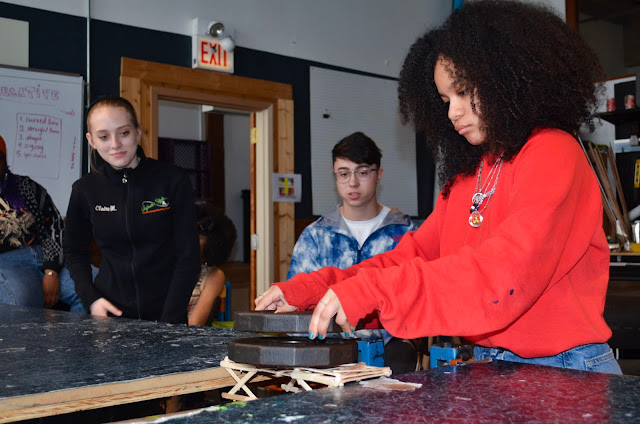International Economics
In this final unit of Econ we each had our own task of understanding how to think of economics in the 21st Century. We did this by reading a chapter of the book Doughnut Economics: Seven Ways to Think Like a 21st-Century Economist by Kate Raworth. I read about what we create as the self portrait of humanity for economics, hence, homo economicus, "economic man". Each chapter focused on a different aspect of economics that could be given a different model of function. Our external investigation involved visiting a company named Reahply. They created a marketplace for a network of companies to exchange or give away resources they would otherwise throw away, preserving sustainability within the world of business. The challenge given for this action project was to create an eighth way of thinking like a 21st-century economist. Using the resources I was exposed to, here is my conclusive principle based off my own perspective:
Behind the scenes of exchange within our country is the origin of product development that foreign countries partake in. The role that they have through practices of labour has the world depending on their oppression and redundant tasks that exist to satisfy the demand of importation. Local businesses can relieve the burden off of that demand. It is important that the global market acknowledges the economy and types of resources its partners have.
The Heckscher-Ohlin international trade theory concerns the “immobility of capital across national frontiers”, meaning the cost of commodity, or goods, should be proportionate to the cost of labour. The pattern shows, countries export goods they possess in abundance and import goods they are scarce in. There was a study of this theory by a Russian-american economist named Wassily Leontief that put this lens on the United States. It concluded that the U.S. should have been “exporting capital-intensive goods while importing labour-intensive goods”, meaning wealth-centered goods that other countries don’t have should be given by the U.S, as a balance to the goods that they work intensively to produce and supply, be it mundane tasks with little pay. It is the cycle of providing while gaining, an aspect to circular economics. The name they gave this theory was the Leontief Paradox. There has been recent slow downs in the global market from countries at risk in falling into recession. In her book, Kate Raworth stated that, “You never change things by fighting the existing reality. To change something, build a new model that makes the existing model obsolete.” A new model of the global market would have a major impact. There is a competitiveness in industry and sense of dispute when different parties collaborate.

This action project required research to formulate an individual model based off of modern perspectives and personal input. I never thought of economics having a large influence on how human interact with value in their environments. I understand now how it relates with time and character.
Blaug, M. (1992). The Heckscher–Ohlin theory of international trade. In The Methodology of Economics: Or, How Economists Explain (Cambridge Surveys of Economic Literature, pp. 185-191). Cambridge: Cambridge University Press.
International Economics
Behind the scenes of exchange within our country is the origin of product development that foreign countries partake in. The role that they have through practices of labour has the world depending on their oppression and redundant tasks that exist to satisfy the demand of importation. Local businesses can relieve the burden off of that demand. It is important that the global market acknowledges the economy and types of resources its partners have.
The Heckscher-Ohlin international trade theory concerns the “immobility of capital across national frontiers”, meaning the cost of commodity, or goods, should be proportionate to the cost of labour. The pattern shows, countries export goods they possess in abundance and import goods they are scarce in. There was a study of this theory by a Russian-american economist named Wassily Leontief that put this lens on the United States. It concluded that the U.S. should have been “exporting capital-intensive goods while importing labour-intensive goods”, meaning wealth-centered goods that other countries don’t have should be given by the U.S, as a balance to the goods that they work intensively to produce and supply, be it mundane tasks with little pay. It is the cycle of providing while gaining, an aspect to circular economics. The name they gave this theory was the Leontief Paradox. There has been recent slow downs in the global market from countries at risk in falling into recession. In her book, Kate Raworth stated that, “You never change things by fighting the existing reality. To change something, build a new model that makes the existing model obsolete.” A new model of the global market would have a major impact. There is a competitiveness in industry and sense of dispute when different parties collaborate.

This action project required research to formulate an individual model based off of modern perspectives and personal input. I never thought of economics having a large influence on how human interact with value in their environments. I understand now how it relates with time and character.
Sources
Blaug, Mark. “International Economics.” Encyclopædia Britannica, Encyclopædia Britannica, Inc., 18 Oct. 2019, www.britannica.com/topic/economics/International-economics.
Blaug, M. (1992). The Heckscher–Ohlin theory of international trade. In The Methodology of Economics: Or, How Economists Explain (Cambridge Surveys of Economic Literature, pp. 185-191). Cambridge: Cambridge University Press.
Old Idea, New Insights: The Ricardian Revival in International Trade, data.nber.org/reporter/2017number3/costinot.html.

Comments
Post a Comment